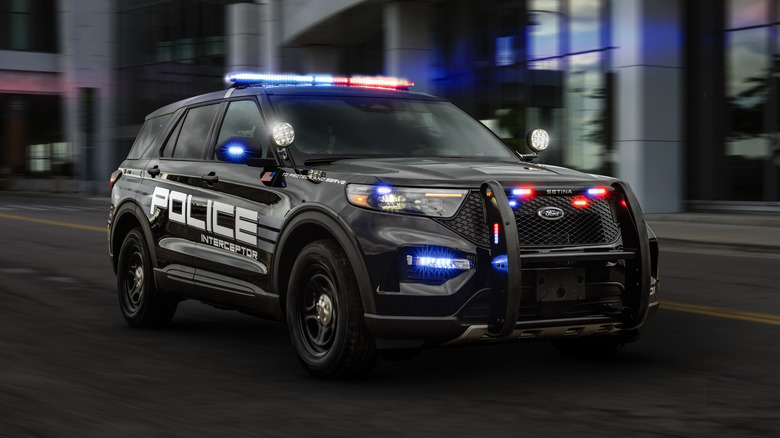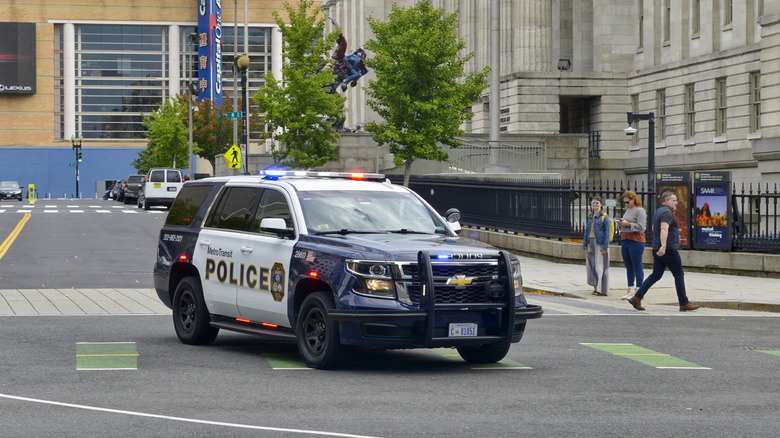What Makes A Police Car Engine Different From What's Under Your Hood?
The differences between a police car engine and the one that's under your car's hood are due to the type of life the typical police car leads. All mass-market police cars offered by Ford, Chevrolet, and Dodge/Ram are based on production vehicles, with factory modifications designed for police duty. This means that a police car's engin must be able to withstand extended periods of idling while powering the vehicle's computers, radio communication systems, sirens, lights and other power-consuming accessories — without overheating.
This typically requires a heavy-duty cooling system with a higher-capacity radiator and a larger cooling fan and may also include additional coolers for the transmission, oil, and power steering. To generate a sufficient amount of electricity for all of the police car's power draws, it also comes with a high-output alternator and heavy-duty battery.
Police cars can be called upon to perform pursuit duties or engage in high-speed chases. These police cars will usually have high-output engines, either a V8 or a turbocharged six. Ford's current Police Interceptor Utility, based on the Explorer, offers a 3.0-liter, 400-horsepower EcoBoost V6 mated to a 10-speed automatic transmission and all-wheel drive. The Chevrolet Tahoe Police Pursuit Vehicle, or PPV, comes with a 5.3-liter V8 producing 355 horsepower, sent through a 10-speed automatic and either rear-wheel or four-wheel drive. Some electric vehicles are also getting police treatments, with the Chevy Blazer EV and the Mustang Mach-E becoming available for police forces, but they're still not the fastest police cars on the road.
What other features make a police car different?
To support the heavy-duty engines in today's police cars, there are other parts that must be beefed up to handle police duty. The suspension incorporates heavier springs, stronger shocks and thicker stabilizer bars. Brakes are also upgraded, a great example of that being the Tahoe PPV and its Brembo front calipers. Bespoke police car tires are mounted on heavy-duty wheels. Drivetrain components like the exhaust system, U-joints, and driveshaft are also upgraded, while deflector plates protect the engine from underbody impacts. In a performance test of 2024 police vehicles, the Ford PIU took first place with its 148 mph top speed, but the Mustang Mach-E EV bested it in 0-60 mph acceleration with a 4.07-second time.
Police officers spend many hours in the front seats of a police car, while those arrested must be stowed securely in the back. While the front seats are designed for officer comfort, with cushions adapted for the police equipment they must carry, along with anti-stab protection in the seatbacks, the rear compartment is set up as an enclosed, easy-to-clean, vinyl or plastic-covered space without storage areas for contraband.
It's all designed to keep perps under control while they ride to the station. Safety is important to users of police cars because officers often park in dangerous areas on roadways. To protect the front from serious impacts, some police cars may also be fitted with bull bars.

